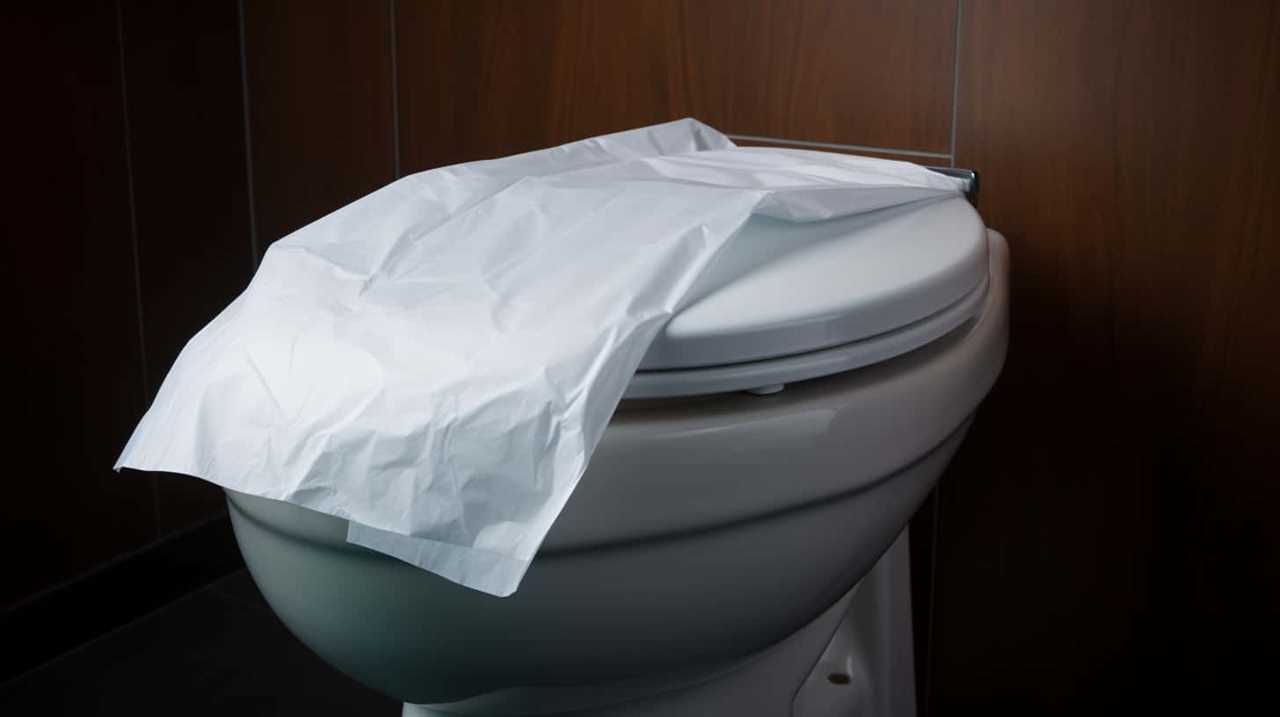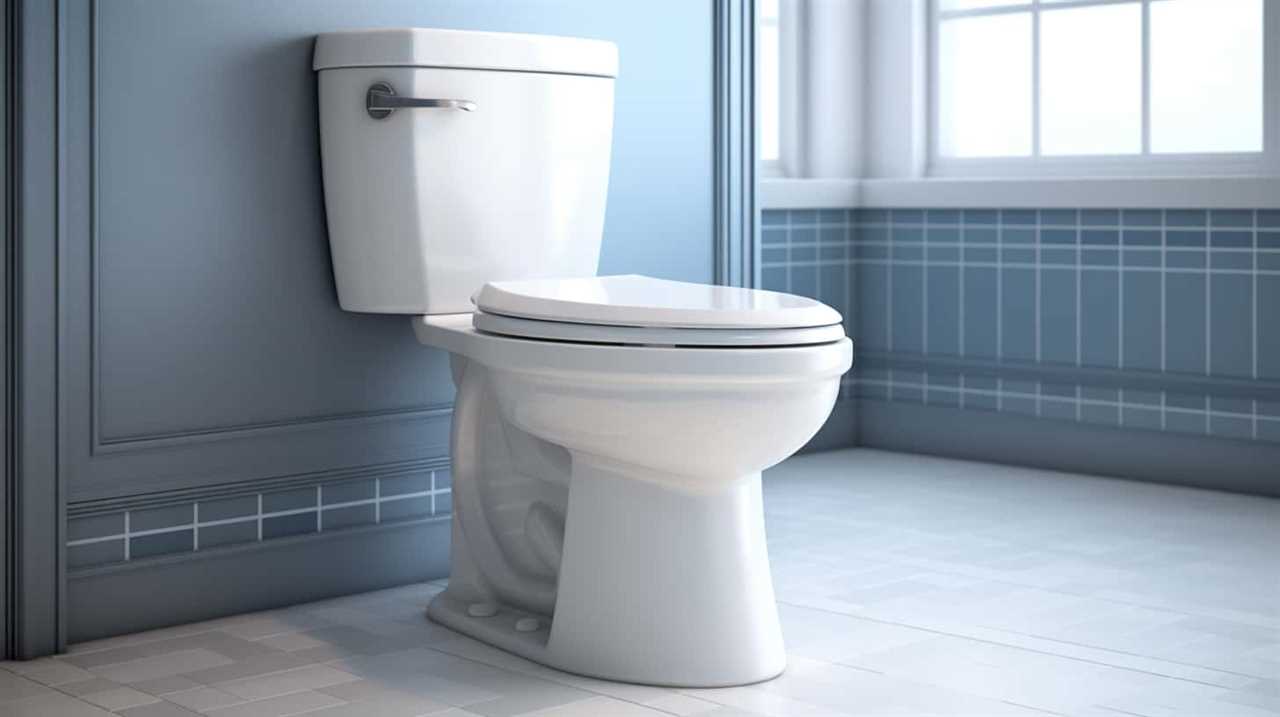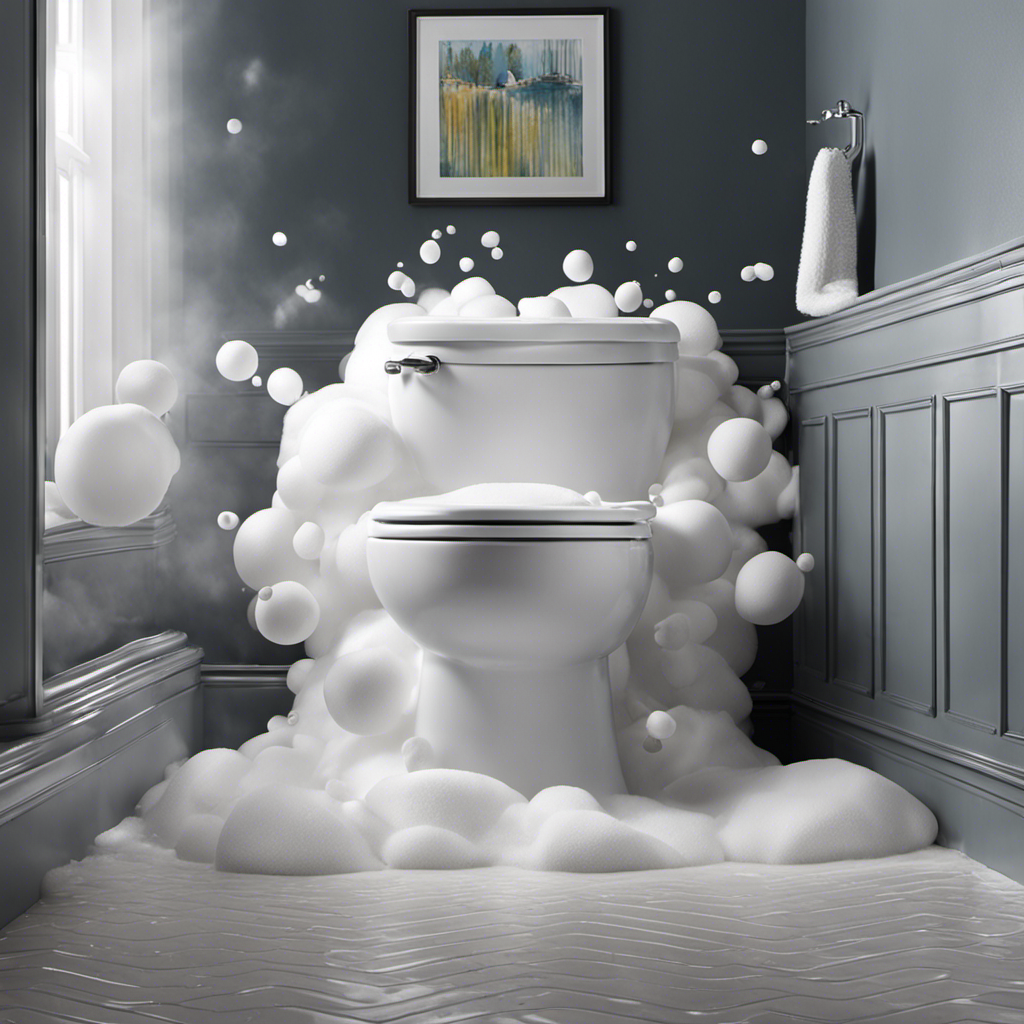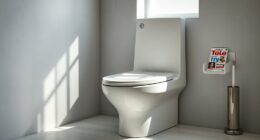Is it okay to dispose of wipes by flushing them down the toilet?
Many people wonder about this common practice, but the truth is, flushing wipes can cause serious damage to plumbing systems.
In this article, we will delve into the types of wipes that should never be flushed, explain why flushing wipes can lead to blockages in sewer systems, and outline the cost and regulations associated with repairing such damage.
Stay informed and learn the proper disposal methods for different types of wipes.

Key Takeaways
- Non-biodegradable wipes should never be flushed down the toilet, as they can cause clogs in the sewer system.
- Proper disposal of wipes involves placing them in sealed bags or containers before throwing them away.
- Compostable wipes or reusable cloth wipes are more environmentally friendly alternatives to non-biodegradable wipes.
- Flushing wipes can lead to plumbing damage, clogged toilets, and contamination of water sources and marine ecosystems.
Types of Wipes to Avoid Flushing
First, let’s clarify that we should avoid flushing any type of wipes down the toilet. Proper storage and alternative disposal methods are essential to maintain plumbing systems and prevent environmental damage.
When it comes to wipes, it’s crucial to understand which types should never be flushed. Non-biodegradable wipes, such as baby wipes, disinfectant wipes, and makeup remover wipes, should always be disposed of in the trash. These wipes aren’t designed to break down in water, causing blockages in pipes and clogging sewer systems. To ensure proper disposal, it’s advisable to place used wipes in sealed bags or containers before throwing them away.
Additionally, exploring alternative options like compostable wipes or reusable cloth wipes can be more environmentally friendly and sustainable choices.
Understanding the Composition of Wipes
When it comes to understanding the composition of wipes, there are a few key points to consider.
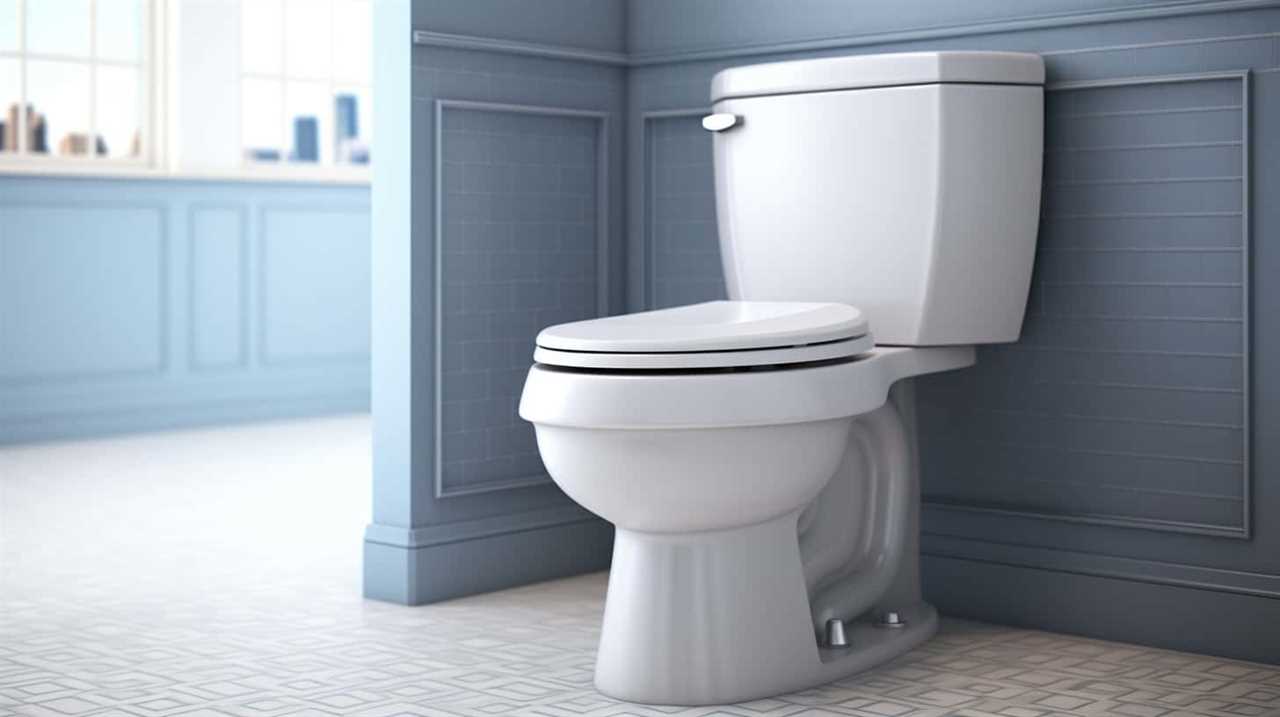
First, wipes can cause sewer clogs due to their non-biodegradable materials, such as plastic fibers.
Second, while some wipes claim to be biodegradable, they may still take a significant amount of time to break down, posing a risk to sewer systems and the environment.
Lastly, the environmental impact of wipes is a growing concern, as they contribute to the accumulation of waste in landfills and can harm marine life if they end up in water bodies.
Wipes and Sewer Clogs
We have found that the composition of wipes plays a significant role in the occurrence of sewer clogs. Understanding the composition of wipes can help prevent these clogs and avoid potential plumbing issues. Here are five key points to consider:

- Avoid flushable wipes: Despite their name, flushable wipes aren’t truly flushable. They don’t break down quickly enough and can cause clogs in the sewer system.
- Avoid wipes with plastic fibers: Wipes that contain plastic fibers don’t break down easily and can contribute to clogs.
- Look for biodegradable wipes: Opt for wipes that are labeled as biodegradable, as they’re designed to break down more easily in the sewer system.
- Check for flushability labels: Some wipes are specifically labeled as safe to flush. Look for these labels to ensure you’re using wipes that are less likely to cause clogs.
- Consider alternatives: If possible, consider using alternatives to wipes, such as toilet paper or bidets, to reduce the risk of clogs altogether.
Biodegradability of Wipes
To understand the composition of wipes and their biodegradability, let’s delve into how these factors contribute to sewer clogs. Wipes are made of various materials, including cotton, polyester, and synthetic fibers, which are often blended together. While some wipes claim to be biodegradable, they may not break down as easily as toilet paper due to the presence of synthetic materials. Biodegradability testing is conducted to determine the rate at which wipes break down in different environments. However, even if a wipe is labeled as biodegradable, it doesn’t mean it will break down quickly in sewer systems. The impact of wipes on water quality is significant, as they can clog pipes, cause sewage backups, and contribute to the formation of fatbergs. Therefore, it is crucial to dispose of wipes in the trash rather than flushing them down the toilet.
| Material | Biodegradability |
|---|---|
| Cotton | Biodegradable |
| Polyester | Non-biodegradable |
| Synthetic fibers | Non-biodegradable |
Environmental Impact of Wipes
Continuing from the previous subtopic on the biodegradability of wipes, let’s now explore the environmental impact of wipes by understanding their composition.
- Wipes are typically made of a combination of materials such as synthetic fibers, plastics, and chemicals. These materials aren’t easily broken down by natural processes, leading to concerns about their biodegradability.
- When wipes are flushed down the toilet, they can clog sewage systems and contribute to blockages and overflows. The chemicals present in wipes can also have a negative impact on water quality, contaminating rivers, lakes, and oceans.
- Additionally, the production of wipes requires significant amounts of energy and resources, contributing to environmental degradation.
Understanding the composition of wipes helps us recognize their potential environmental harm. It’s important to dispose of wipes properly to prevent biodegradability concerns and protect water quality.
Common Misconceptions About Flushing Wipes
There are several misconceptions about flushing wipes down the toilet that need to be addressed.

One common misconception is that wipes labeled as ‘flushable’ are biodegradable and can safely be flushed. However, this isn’t always the case. While some flushable wipes may break down more easily than regular wipes, they can still cause clogs and blockages in the sewage system.
Another misconception is that flushing wipes is a proper disposal method. In reality, wipes should be disposed of in the trash to prevent damage to plumbing systems and wastewater treatment plants. Flushing wipes not only contributes to clogs, but it also poses environmental risks by contaminating water sources and harming aquatic life.
Therefore, it’s important to educate ourselves on the proper disposal methods to minimize the negative impact of wipes on our environment.
The Impact of Flushing Wipes on Plumbing
When it comes to the impact of flushing wipes on plumbing, there are several important points to consider.
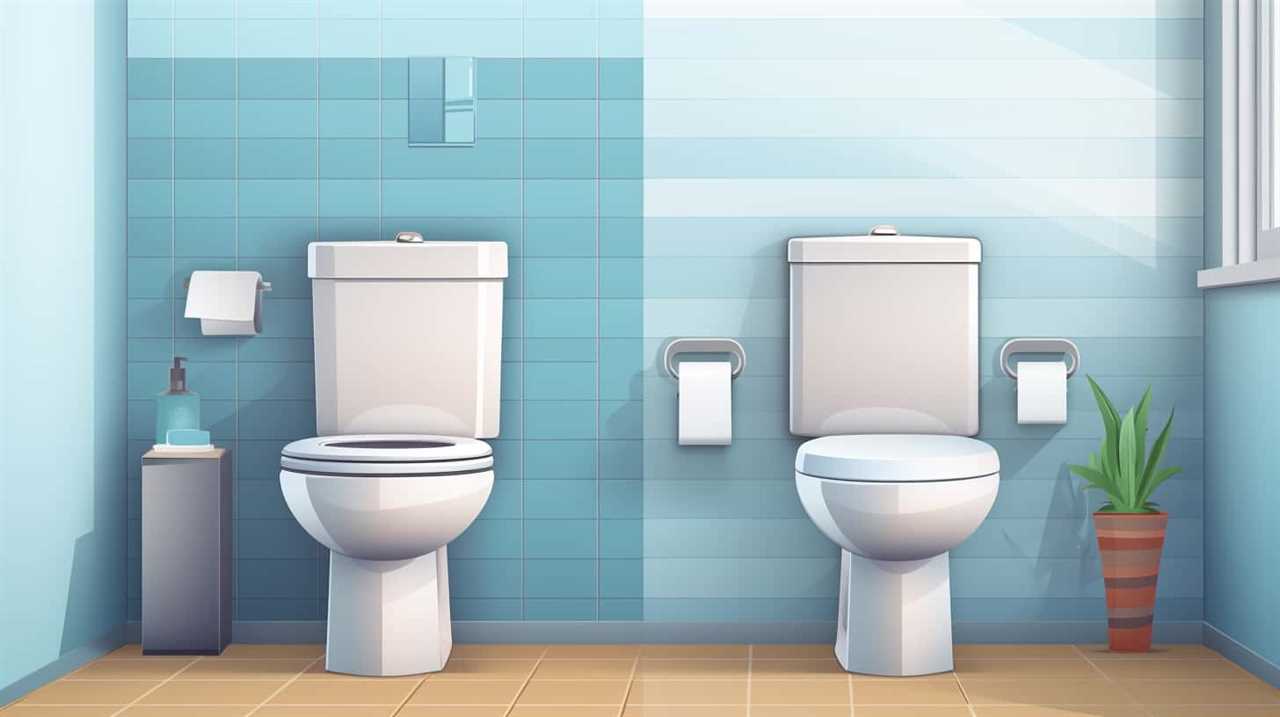
First, flushing wipes can cause significant damage to your plumbing system, leading to clogging and blockages.
Additionally, flushing wipes can have serious environmental consequences, as they can contribute to sewer overflows and pollution.
It’s crucial to be aware of these potential issues and avoid flushing wipes down the toilet to protect your plumbing and the environment.
Plumbing Damage From Wipes
Flushing wipes down the toilet can cause significant plumbing damage. When wipes enter the plumbing system, they can accumulate and form blockages that lead to clogged pipes. This can result in sewage backups, water leaks, and even burst pipes.

The consequences of improper disposal of wipes are far-reaching and can cause expensive repairs, inconvenience, and potential health hazards. Here are five key points to understand about the plumbing damage caused by flushing wipes:
- Wipes aren’t designed to break down like toilet paper, leading to the accumulation of non-biodegradable materials in the plumbing system.
- The accumulation of wipes can create blockages that restrict the flow of water, causing toilets to back up or drains to become sluggish.
- Clogs caused by wipes can put excessive strain on pipes, leading to leaks or pipe bursts.
- Repairing plumbing damage caused by wipes can be costly, requiring professional intervention and potential replacement of pipes.
- Flushing wipes also poses a risk to the environment, as they can end up in waterways and contribute to pollution.
Clogging Toilet With Wipes
Now let’s delve into the impact of flushing wipes on plumbing by exploring how wipes can clog toilets.
Flushing wipes down the toilet can lead to clogging, which is a common issue faced by many households. Wipes aren’t designed to break down easily in water like toilet paper. Instead, they’re made of materials that are more durable and resistant to disintegration.
As a result, when flushed, wipes can accumulate in the pipes and create blockages. This can cause toilets to become clogged, resulting in reduced water flow or even complete blockage.
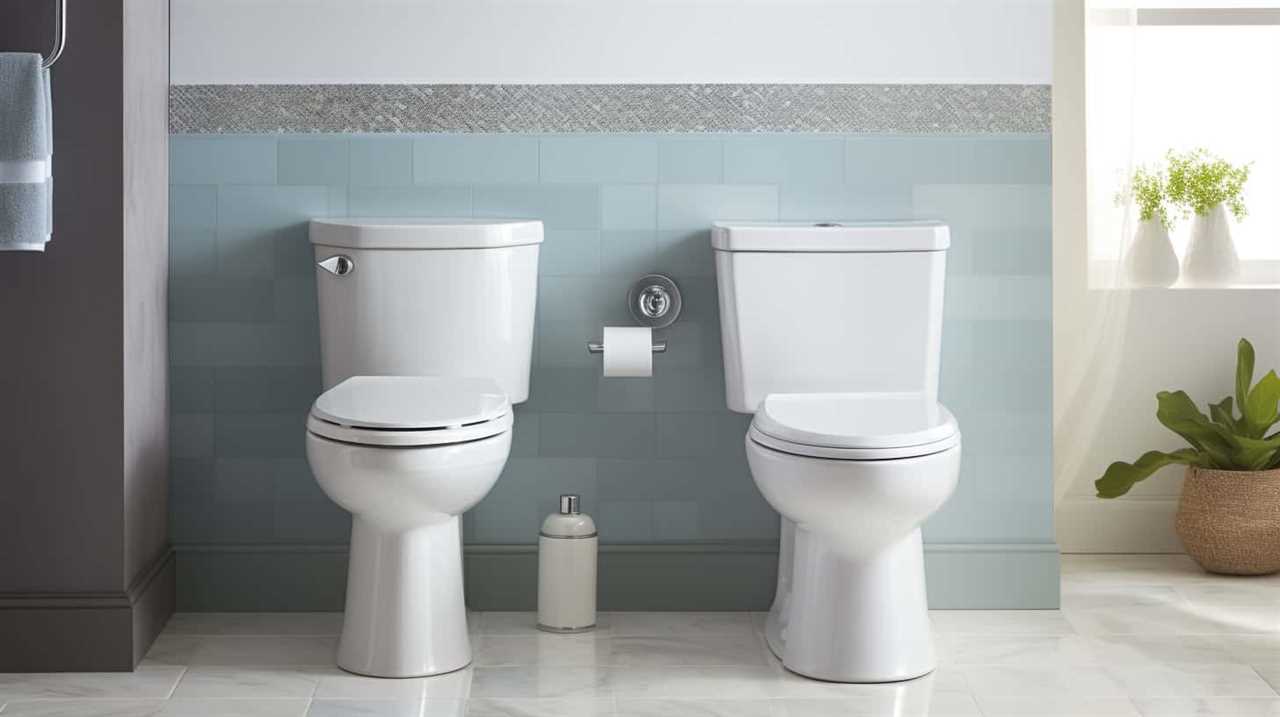
To prevent clogging, it’s crucial to dispose of wipes properly by placing them in the trash. By following proper disposal methods, we can avoid the inconvenience and costly repairs associated with clogged toilets.
Transitioning into the subsequent section about the environmental consequences of flushing wipes, it’s essential to understand the broader impact of this improper disposal.
Environmental Consequences of Flushing Wipes
To continue our discussion on the impact of flushing wipes on plumbing, let’s now explore the environmental consequences of this practice.
Flushing wipes can have significant biodegradability challenges, leading to a range of negative effects on sewage treatment plants and the environment. Here are five key consequences to consider:

- Wipes don’t break down easily: Unlike toilet paper, wipes aren’t designed to disintegrate quickly. This can result in clogged pipes and blocked sewage systems, leading to costly repairs and backups.
- Increased strain on sewage treatment plants: The presence of non-biodegradable wipes in wastewater can overload sewage treatment plants, reducing their efficiency and potentially causing untreated sewage to be released into water bodies.
- Environmental pollution: When wipes bypass the treatment process and enter water bodies, they contribute to pollution. Marine life can mistake them for food, leading to ingestion and entanglement, posing a threat to their survival.
- Microplastic contamination: Many wipes contain synthetic fibers that break down into microplastics. These tiny particles can accumulate in water systems, potentially affecting aquatic ecosystems and even entering the food chain.
- Financial burden: Dealing with the consequences of flushing wipes, such as pipe repairs and increased maintenance of sewage treatment plants, can result in higher costs for both individuals and municipalities.
It is crucial to be aware of these environmental consequences and to dispose of wipes properly to protect our plumbing systems and the environment.
Why Wipes Cause Blockages in Sewer Systems
Wipes, when flushed down the toilet, can cause blockages in sewer systems. This is due to their non-disintegrating nature and the accumulation of wipes in the sewer pipes. Although many people believe that all wipes are safe to flush, there are certain types that should be avoided. Wet wipes, baby wipes, and cleaning wipes are some examples of wipes that should not be flushed down the toilet. Despite common misconceptions, even wipes labeled as "flushable" can cause blockages because they do not break down as easily as toilet paper. Flushing wipes can lead to clogged pipes, sewage backups, and costly repairs for homeowners and municipalities. To illustrate the impact of wipes on sewer systems, consider the following table:
| Types of Wipes to Avoid | Common Misconceptions about Flushing Wipes |
|---|---|
| Wet wipes | Wipes labeled as "flushable" are safe |
| Baby wipes | Wipes easily break down like toilet paper |
| Cleaning wipes | Flushing wipes won’t cause any problems |
It is crucial to dispose of wipes properly in the trash bin to prevent sewer blockages and maintain the integrity of our sewer systems.
Alternatives to Flushing Wipes Down the Toilet
Instead of flushing wipes down the toilet, we can dispose of them properly in the trash bin. This ensures that the wipes don’t cause blockages in sewer systems and helps protect the environment.

When it comes to disposal options for wipes, there are several eco-friendly alternatives to consider:
- Composting: If the wipes are made from biodegradable materials, they can be added to a compost pile or bin.
- Recycling: Some wipes, such as those made from natural fibers or certain plastics, can be recycled. Check with local recycling facilities for specific guidelines.
- Disposal bags: Use specially designed disposal bags that can seal in the wipes and prevent them from causing harm.
- Reusable wipes: Consider using reusable cloth wipes that can be washed and reused, reducing waste.
- Wet wipe alternatives: Explore alternatives such as bidets, toilet paper, or dampened washcloths for a more sustainable option.
How Wipes Affect Septic Systems
Considering the potential impact on septic systems, it’s crucial to understand how flushing wipes can affect their functionality. Many people believe that all wipes are safe to flush, but this is a common misconception. In reality, only toilet paper should be flushed down the toilet.
Certain types of wipes, such as baby wipes, disinfecting wipes, and makeup remover wipes, aren’t biodegradable and can clog septic systems. These wipes are typically made of synthetic materials that don’t break down easily in water. When flushed, they can accumulate and create blockages in the septic system, leading to backups and costly repairs.
To avoid these issues, it’s important to dispose of wipes in the trash instead of flushing them. This will help maintain the proper functioning of your septic system and prevent unnecessary damage. By following this simple guideline, you can ensure the longevity and efficiency of your septic system.

The Environmental Impact of Flushing Wipes
When it comes to flushing wipes down the toilet, there are several environmental impacts to consider.
One concern is the challenge it poses to wastewater treatment systems. Wipes don’t break down easily and can clog pipes and pumps, leading to costly repairs and increased energy consumption.
Additionally, the chemicals and microplastics present in wipes can contaminate marine ecosystems, harming wildlife and disrupting the balance of aquatic environments.
Wastewater Treatment Challenges
Our wastewater treatment facilities face significant challenges due to the environmental impact of flushing wipes. Wastewater management is a complex process that involves the removal of contaminants from wastewater before it can be safely discharged back into the environment. However, wipes, particularly those labeled as ‘flushable,’ pose a major problem for wastewater treatment plants.
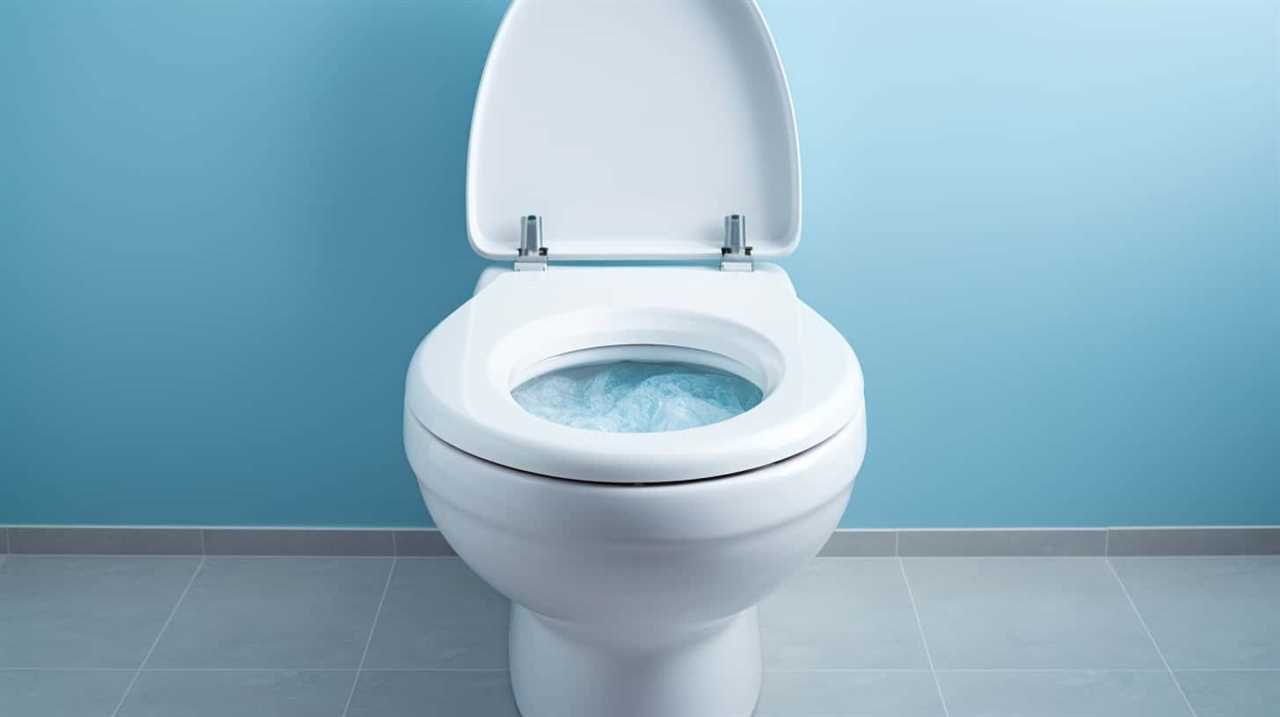
Here are five key challenges faced by these facilities:
- Clogging: Wipes don’t break down easily and can clog pipes, leading to costly repairs and maintenance.
- Filtration difficulties: Wipes can bypass filtration techniques, resulting in the release of microplastics and other harmful substances into water bodies.
- Increased energy consumption: Dealing with clogs caused by wipes requires additional energy for pumping and processing wastewater.
- Reduced treatment efficiency: Wipes can interfere with the effectiveness of biological treatment processes, leading to suboptimal treatment results.
- Environmental impact: The presence of non-biodegradable wipes in water bodies can harm aquatic life and ecosystems.
These challenges highlight the urgent need for better education on proper disposal methods and the development of more effective filtration techniques.
Transitioning into the subsequent section, we’ll explore the concerning issue of marine ecosystem contamination caused by the flushing of wipes.
Marine Ecosystem Contamination
As we delve into the topic of marine ecosystem contamination caused by the flushing of wipes, it’s crucial to understand the detrimental environmental impact of this practice.
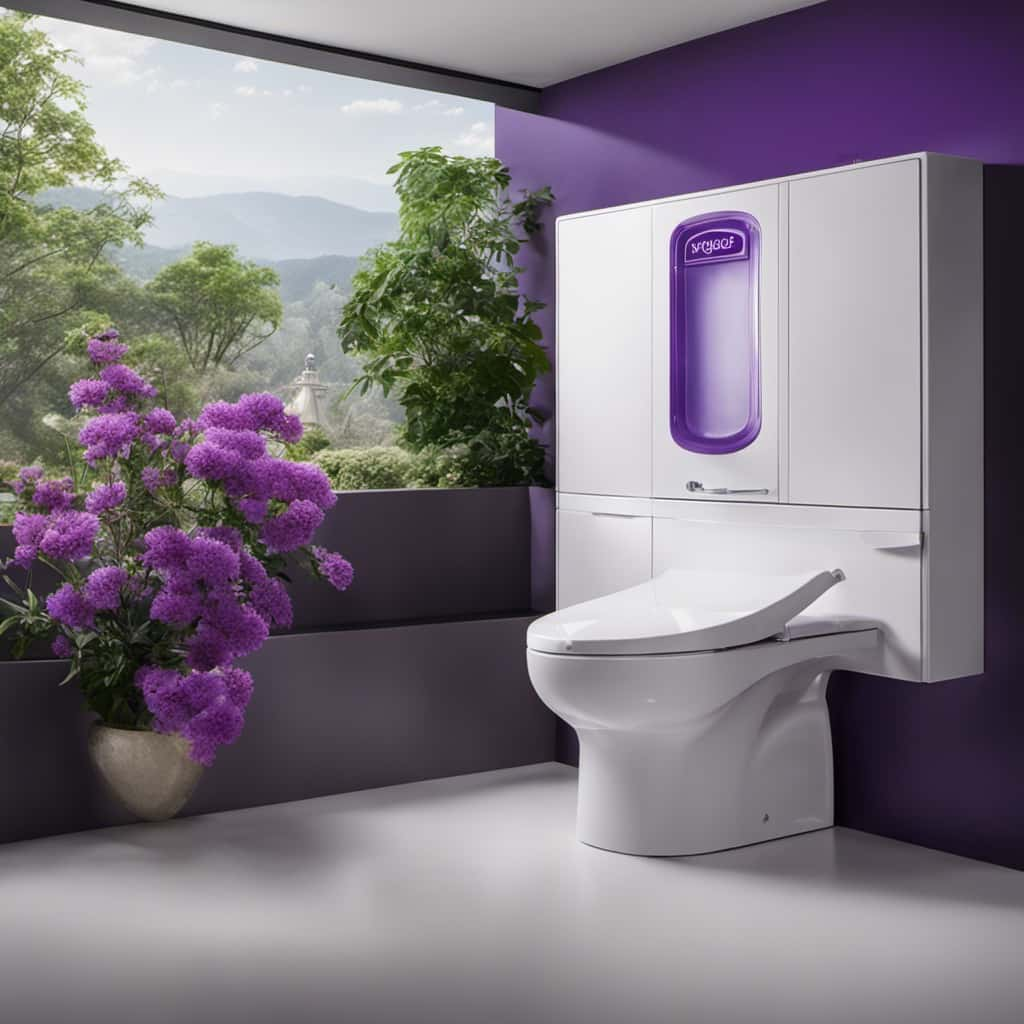
Marine pollution is a serious concern, and the flushing of wipes contributes to the problem by introducing microplastic contamination into our oceans. Wipes are typically made from synthetic materials like polyester or polypropylene, which don’t break down easily.
When flushed down the toilet, these wipes make their way into wastewater treatment plants, where they can bypass filtration systems and end up in rivers and oceans.
Once in the marine environment, these wipes gradually break down into microplastics, which are small plastic particles less than 5mm in size. These microplastics are ingested by marine animals, leading to health issues and disrupting the entire ecosystem.
It’s important to recognize the role that flushing wipes plays in marine pollution and take steps to mitigate this environmental threat.
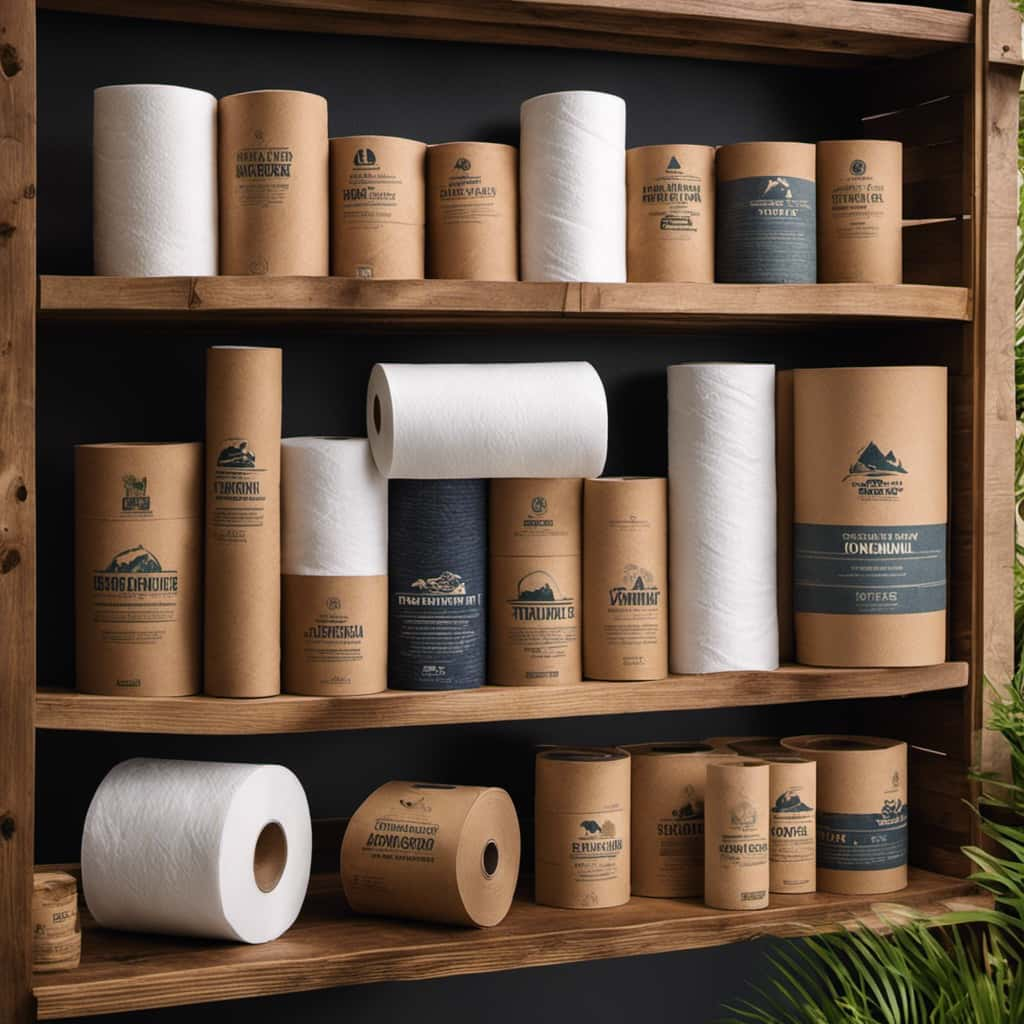
Wastewater Treatment and the Challenges of Removing Wipes
Removing wipes from wastewater poses significant challenges for wastewater treatment facilities. These challenges arise due to the nature of wipes, which are designed to be durable and resistant to breaking down. Here are five key challenges faced by wastewater treatment facilities when it comes to removing wipes:
- Clogging: Wipes can accumulate and clog pumps, pipes, and other equipment in the wastewater treatment process, leading to costly repairs and downtime.
- Increased maintenance: Wipes require more frequent maintenance of sewage systems, including increased cleaning and unclogging efforts.
- Inefficient filtration: Wipes can bypass traditional filtration systems, leading to decreased effectiveness in removing pollutants from the wastewater.
- Damage to equipment: The abrasive nature of wipes can cause damage to mechanical components, reducing their lifespan and increasing maintenance costs.
- Marine pollution: When wipes aren’t effectively removed from wastewater, they can enter water bodies, contributing to marine pollution and harming aquatic ecosystems.
These challenges highlight the importance of proper waste disposal and the need for public awareness about the impact of flushing wipes down the toilet.
Risks of Flushing Wipes for the Marine Ecosystem
Continuing the discussion from the challenges faced by wastewater treatment facilities, flushing wipes down the toilet poses significant risks to the marine ecosystem. Marine pollution caused by flushed wipes can have severe ecological consequences. These consequences include damage to marine habitats, harm to marine life, and disruption of the delicate balance of marine ecosystems.
To illustrate the potential impact of flushing wipes on the marine ecosystem, consider the following table:

| Ecological Consequences of Flushing Wipes |
|---|
| Damage to marine habitats |
| Harm to marine life |
| Disruption of marine ecosystems |
Marine habitats, such as coral reefs and seagrass beds, can be smothered by the accumulation of flushed wipes. Marine life, including fish, mammals, and birds, can become entangled in wipes or mistake them for food, leading to injury or death. The disruption of marine ecosystems can have far-reaching effects on the entire food chain.
In the next section, we will explore the cost of repairing the damage caused by flushed wipes and the importance of finding alternative disposal methods.
The Cost of Repairing Damage Caused by Flushed Wipes
When flushed wipes clog pipes and sewer systems, it can result in expensive plumbing repairs. The accumulation of wipes can create blockages that require professional intervention to resolve, leading to high costs for homeowners and municipalities.
In addition to the financial impact, the environmental consequences of flushed wipes further highlight the need for proper disposal methods.

Expensive Plumbing Repairs
To address the costly consequences of flushed wipes, we must delve into the realm of expensive plumbing repairs caused by this practice. Flushing wipes down the toilet can lead to a range of plumbing issues that require professional intervention. Here are some expensive plumbing repairs that can result from improper wipes disposal methods:
- Clogged pipes: Flushed wipes can accumulate in the plumbing system, causing blockages that require extensive cleaning or even pipe replacement.
- Sewer line damage: Flushed wipes can get stuck in the sewer lines, leading to backups and potential damage to the infrastructure.
- Toilet malfunctions: Wipes can clog the toilet’s internal mechanisms, necessitating repairs or replacements.
- Pipe leaks: In some cases, flushed wipes can cause pipes to crack or develop leaks, resulting in water damage and costly repairs.
- Septic tank problems: Flushing wipes can disrupt the balance of bacteria in septic tanks, leading to costly maintenance or replacement.
Understanding the expensive consequences of flushing wipes underscores the importance of educating about plumbing risks.
Transitioning into the subsequent section about the environmental impact of wipes, we can further explore the impact of this practice beyond the financial implications.
Environmental Impact of Wipes
As we delve into the environmental impact of wipes and the cost of repairing damage caused by flushed wipes, it becomes clear that our improper disposal practices have far-reaching consequences. The biodegradability issues associated with wipes pose a significant threat to our water quality. When wipes are flushed down the toilet, they don’t break down like toilet paper does. Instead, they can accumulate in our sewer systems, causing clogs and backups. These blockages can lead to costly repairs and maintenance for municipalities and homeowners alike. Furthermore, when wipes make their way into our waterways, they can harm aquatic life and disrupt the delicate balance of ecosystems. To emphasize the magnitude of this issue, consider the following table:
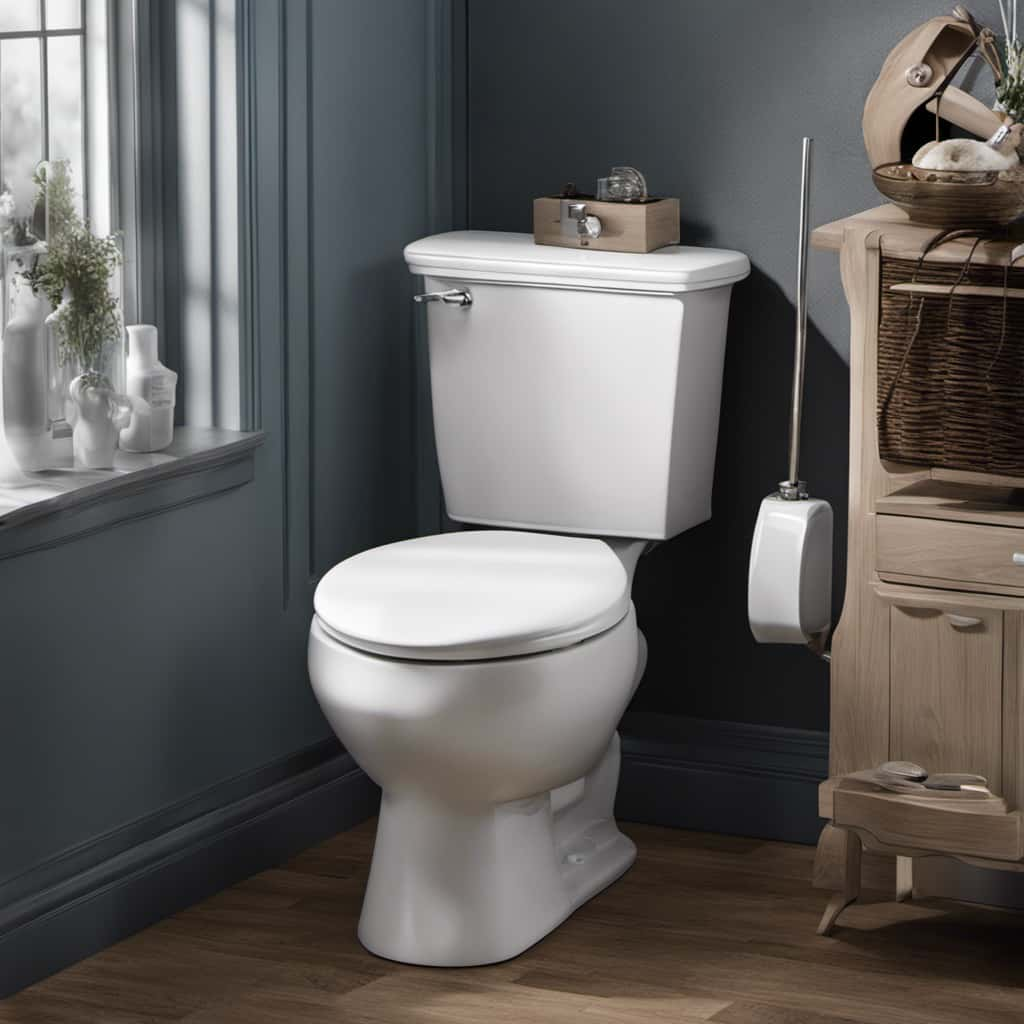
| Environmental Impact of Flushed Wipes |
|---|
| Increased water pollution |
| Damage to sewer infrastructure |
| Harm to aquatic ecosystems |
It is essential that we address these concerns and promote responsible disposal practices to protect our water quality and prevent further damage to our environment.
Regulations and Guidelines on Flushing Wipes
We frequently encounter regulations and guidelines that discourage the flushing of wipes down the toilet. These regulations are in place to ensure the proper disposal of wipes and to prevent clogs and blockages in the sewer system. Here are some key points to consider:
- Composition regulations: Many wipes are made from materials that don’t break down easily, such as plastic or synthetic fibers. Flushing them can lead to environmental pollution and damage to water treatment systems.
- Proper disposal methods: It’s recommended to dispose of wipes in the trash instead of flushing them. This helps prevent plumbing issues and protects the environment.
- Local regulations: Different regions may have specific guidelines regarding the disposal of wipes. It’s important to check with local authorities or wastewater management agencies for specific instructions.
- Alternatives to flushing: Using alternatives like toilet paper or biodegradable wipes that are specifically designed to be flushed can help reduce the impact on the sewer system.
- Public awareness campaigns: Many organizations and government agencies are promoting awareness about the proper disposal of wipes to educate the public and encourage responsible flushing practices.
Proper Disposal Methods for Different Types of Wipes
For all types of wipes, it is important to use the appropriate disposal methods to prevent clogs and protect the environment. Understanding the compostability and proper disposal methods for different types of wipes is crucial in maintaining a sustainable waste management system.
To help you navigate the proper disposal methods for various types of wipes, here is a table outlining the recommended methods:

| Type of Wipes | Proper Disposal Method |
|---|---|
| Flushable wipes | Follow manufacturer’s instructions and dispose of in the toilet. |
| Biodegradable wipes | Dispose of in the compost bin or organic waste bin, if available. |
| Non-biodegradable wipes | Place in the regular trash bin. |
Educating Others About the Risks of Flushing Wipes
To educate others about the risks of flushing wipes, let’s start by highlighting the potential consequences. Flushing wipes can have serious impacts on both the environment and our sewer infrastructure. Here are some key points to consider:
- Biodegradability concerns: Most wipes aren’t biodegradable and can take years to break down. This can lead to clogs in the sewer system and harm aquatic life when they eventually make their way into rivers and oceans.
- Clogging pipes: Wipes don’t dissolve like toilet paper and can easily get stuck in pipes, causing blockages. These blockages can result in expensive repairs and inconvenience to homeowners.
- Overburdened sewage treatment plants: Flushed wipes can overwhelm sewage treatment plants, leading to equipment malfunctions and increased maintenance costs.
- Increased wastewater treatment costs: The removal of wipes from wastewater requires additional filtration and screening processes, which can increase the cost of wastewater treatment for municipalities.
- Environmental pollution: Flushed wipes contribute to the accumulation of microplastics in water bodies, posing a threat to marine life and potentially entering the food chain.
Conclusion
In conclusion, flushing wipes down the toilet is like pouring sand into a delicate hourglass. It may seem harmless at first, but the accumulation of wipes can cause serious blockages in plumbing systems, leading to costly repairs and environmental damage.
Understanding the composition of wipes and properly disposing of them is crucial to prevent these issues. Let’s spread awareness and educate others about the risks of flushing wipes to keep our plumbing systems flowing smoothly.
